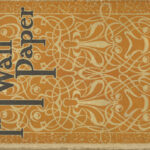In A Jury of Her Peers (1917) by Susan Glaspell, two women find crucial evidence that could convict a fellow woman for murder but choose to conceal it from the male authorities because they “understand” why she did it. This story is based on true events of the 1901 Hossack Murder Case which Glaspell covered as a reporter. A farmer’s wife (Margaret Hossack) was accused of killing her husband at night with an ax, convicted of murder, but freed after one year when her conviction was overturned and the jury couldn’t come to a consensus in a second trial. Among the issues of concern in the case was the couple’s troubled marriage and accusations of spousal abuse inflicted on Margaret.
This essay will use the feminist literary theory to analyze A Jury of Her Peers by expounding a few elements and themes of feminist literature that are present in the story.
‘A Jury of Her Peers’ Summary
It’s a cold windy March morning in Dickson County and Minnie Foster’s husband, Mr. Wright, is dead. He was found strangled on their bed when she woke up. Mr. Henderson and Mr. Peters, the county attorney and the sheriff, respectively, have come to the Wright’s house for an investigation. They’ve also summoned the Wright’s neighbor, Mr. Hale, to give an account of the previous day’s events. Hale has tagged along his wife, Martha Hale, for formalities and so has Mr. Peters.
The group arrives at the Wright’s in a big two-seated buggy and the men get right into the investigation. First, Mr. Henderson asks Mr. Hale to narrate everything he saw when he visited the Wright’s the previous morning. After this, the county attorney briefly moves around the kitchen touching the cupboard before moving to the sink and later to the upstairs with the other two men.
Left in the kitchen alone with Mrs. Peters, Martha Hale begins to arrange a pile of dishes that the county attorney has knocked over. The two women then gather a few things that Minnie Foster has requested from jail in the front-room closet, before sighting a few objects that insinuate Minnie Foster’s involvement in her husband’s murder. First, the sheriff’s wife notices a block of the quilt that’s unevenly done unlike the others, almost as if the person who knit it was nervous. Next, the two women notice a bird cage whose door hinge has been pulled apart, almost as if someone had been rough with it. Finally, the two women come across a box with a dead bird, whose neck has been wrung and they look at each other knowingly. Martha Hale quickly hides the box in the pocket of her big coat just as the three men return to the kitchen.
‘A Jury of Her Peers’ Feminist Analysis
Feminist literature is any piece of literary work that features themes covered by feminist movements, such as gender inequality, women’s rights and freedoms, unhealthy gender norms, and so on. Literary analysis and criticism is subjective, and elements of feminism in a story might not shout out on the same level to different readers. However, there’s a list of classic literature, especially those published in the 19th and early 20th century, whose feminist themes are hard to ignore. This timeline also coincides with the First Wave of feminism which questioned the equality and treatment of women in a then heavily male-dominated and patriarchal society. Glaspell’s short story A Jury of Her Peers falls into this category, with several feminist topics advancing the plot and other literary devices like irony.
Women in Marriage
The first wave of feminism viewed marriage as an institution that benefited men and oppressed women. This movement challenged and criticized the popularized image of marriage as a haven, citing the domestic dependency that characterized every married woman’s life. Married women were an extension of their husband’s property. They couldn’t own property, file for divorce, fight for child custody, were expected to be automatically obedient to their husbands despite the conditions, and those who worked didn’t have any legal claim to their earnings. The husband was unquestionably the head of the family and had legal power to impose their will through any means possible, including violence and abandonment.
In A Jury of Her Peers, there’s a stark difference between the young and the married Minnie Foster, as described by Martha Hale. “‘She used to wear pretty clothes and be lively–when she was Minnie Foster, one of the town girls, singing in the choir. But that–oh, that was twenty years ago.’” In another instance, Martha Hale says, “‘I wish you’d seen Minnie Foster’… ‘when she wore a white dress with blue ribbons, and stood up there in the choir and sang.’” The two descriptions conjure an image of a young carefree happy girl who wore bright dresses and sang in the choir.
This is in contrast with married Minnie Foster or Mrs. Wright. Married Minnie is meek and domesticated. The Wrights’ house is also quiet with Minnie being childless and her husband not providing any company even after work. Martha recounts “and Wright out to work all day–and no company when he did come in… ” As a neighbor, Martha Hale describes Wright as close. She says, “But he was a hard man, Mrs. Peters. Just to pass the time of day with him–.” She stopped, shivered a little. “Like a raw wind that gets to the bone.’”
Wright also slowly kills Minnie Fosters’ spirit of singing just like Martha insinuates that he wrung the bird’s neck as well — the thing that sung to Minnie and which she deeply cares for. The state of her messy kitchen and home could also signify her miserable life and the general state of her marriage. Another symbolic comparison to show Minnie’s state as a wife is the difference between her white dress as a young girl and the shabby old black skirt that the two women pack to bring her in jail. The bright white dress depicts happiness and liveliness while the dull black skirt signifies sadness and misery, as supported in the above instances we just discussed.
And finally, there’s much to be said about the collective experience of women in marriage from the way Mrs. Peters and Martha Hale piece the clues together to potentially determine the murderer. They also choose not to forward this evidence to the male authorities because they’ve likely experienced the loneliness that Minnie experiences in her marriage and they “understand” why she might have killed her husband.
Gender Roles and Inequality
Gender inequality was the root of the women’s rights movement and feminism. Women all over the world demanded fair treatment, equal opportunities, and rights, such as voting and property ownership. Up to this day, women are still fighting to close the inequality gap on issues such as employment opportunities and equal pay.
Most female feminist writers between the late 19th century and early 20th century wrote about their experiences as well as the general treatment of women by society during that time. They also, directly or indirectly, criticized the lack of promotion of women to roles that provided them more power. Men were the providers while women were homemakers, often confined to the kitchen. In fact, women were not viewed as intelligent enough to have jobs or make a living. In British classic literature written during the Victorian period, writers often portrayed women as “accepting and naive figures trying to live up to the respectable women of the society.” (Lucas & Ordeniza, 2023) Queen Victoria herself was not a strong supporter of the womens’ rights movements and believed in the conservative role of a woman. In a letter to the poet and writer Theodore Martin, she called the movement a “mad, wicked folly.”
Susan Glaspell’s A Jury of Her Peers is an ideal representation of the differences in gender roles between men and women during that time, both at home and in society. The short story also criticizes this inequality in gender roles by showing that women can do what men can do and sometimes, even better than their male counterparts. First, the men in the story are employed and hold authoritative and important positions in society. Mr. Henderson and Mr.Peters uphold the law, while Mr. Hale’s opinion of what women can and cannot do is obvious when he says, “But would the women know a clue if they did come upon it?.”
All the three women, on the other hand, are homemakers and their roles lie in the kitchen, child bearing, and tending to their children. Martha Hale is working in the kitchen when her husband calls her, while Mrs. Peters mentions her lonesome period in Dakota when her two-year-old baby died. Further, Minnie Foster’s success as a wife or woman is measured by how clean her kitchen is. The county attorney inspects the Wrights’ kitchen and remarks, “Dirty towels! Not much of a housekeeper, would you say, ladies?”
Glaspell uses irony to criticize this difference in gender roles and the view of women as figures who belong among kitchen things. Despite society’s view of women as less intelligent and as persons who cannot hold important positions besides in the kitchen, it’s the two women who find clues and pieces of evidence that insinuate Mrs. Wright killed her husband. The male characters use logic during the investigation but fail to find motive and clues of the murder, while the women use female psychology and intellect to determine the murderer.
Sexism
Discrimination, stereotyping, prejudice, and the obliviousness of the importance of a particular gender are some of the terms that define sexism. This ideology asserts that one gender is superior to another. In most cases, women are the recipients of this prejudice, where men view them as inferior and weak. Society has, since the beginning of time, perceived women as the weaker sex. Women have had to fight relentlessly for equal rights and opportunities as men from voting, driving, holding important positions, property ownership, among others.
Feminist literature in the 19th and 20th century painted sexism towards women in broad colors and then went ahead to criticize it. Women were men’s property and thus, inferior and without personal agency. In Kate Chopin’s The Story of an Hour, a woman learns about her husband’s death and does not grieve as society would expect. Instead, she’s happy to be free from the shackles of marriage despite having loved her husband dearly. In A Yellow Wallpaper by Charlotte Perkins, a woman is driven to madness when her husband ignores her mental health needs and prescribes rest instead. In The Storm by Kate Chopin, the main character is a woman who defies society’s view of women’s expected inability to have sexual desires by having an affair during a storm.
Similarly, in A Jury of Her Peers, men are oblivious to the real power of the female characters and continuously view them as inferior, less intelligent, and unserious. It’s this overlooking that costs the men a great deal of evidence and at the end, they fail to find a motive and clues to convict Minnie Foster. Sexism is obvious in the way men speak about women and disregard their thoughts and way of things in the story.
First, Sheriff Peters trivializes his wife’s fear of visiting a murder scene when he comes back to request that Martha Hale accompany the team to the Wrights; “adding, with a grin, that he guessed she was getting scary and wanted another woman along.” The sheriff tries to make fun of what’s a normal emotional reaction for anyone visiting a murder scene.
When the men are about to leave the kitchen and head upstairs to find clues, the county attorney asks Mrs. Peters to look out for clues that would indicate motive since she’s “married to the law.” In response, Mr. Hale asks, “But would the women know a clue if they did come upon it?” as if delivering himself of something important that needs to be said. He views the women as less intelligent and doubts they understand or would recognize a piece of evidence to the murder if they come across one. How ironic it is that it’s the women who end up finding clues and motive to Mr. Wright’s murder?
The term “kitchen things’ has been repeated three times and the term “kitchen” numerous times throughout the story. First, when the county attorney asks the sheriff to confirm that there’s nothing of importance or that would point to a motive in the kitchen. The sheriff answers, “‘Nothing here but kitchen things,’ he said, with a little laugh for the insignificance of kitchen things.” The other instance is when the men are about to leave for the upstairs and the county attorney looks at “the two women they were leaving alone there among the kitchen things.” The kitchen is the most feminine and womanly place and it’s no wonder the men and women have differing perceptions of its importance. To the women, the kitchen is where their life happens, which is evident when Martha Hale says, “‘I’d hate to have men comin’ into my kitchen,’ she said testily–’snoopin’ round and criticizin’.” This is why the two women manage to piece various pieces of clues from the kitchen. To the men, the kitchen is as insignificant as the women and their ways of life. This is why they fail to consider the possibility of finding evidence in the kitchen and end up missing all the important clues.
Another way that Glaspell illustrates sexism in A Jury of Her Peers is the men’s view of women’s worries as insignificant or in Mr. Hales words, “women are used to worrying over trifles.” The male characters disregard the women’s thoughts, concerns, or opinions about the investigation. As the men ascend from upstairs and hear Martha wondering whether Minnie was going to quilt or knot the unfinished quilt pieces, the sheriff throws up his hands in hopelessness and repeats Martha’s question to the men. There’s then a laugh for “the ways of women”, brief warming on the stove and the men proceed to the barn for more evidence. The irony here is that the quilt pieces are among the clues that would convict Minnie Foster. On this same note, when the men return from the barn, the county attorney jokingly asks, “as one turning from serious things to little pleasantries, “’have you decided whether she was going to quilt it or knot it?’” The men are so disregarding of the women’s abilities and intelligence that they fail to notice the change in Mrs. Peters’ voice when she answers the county attorney.
And don’t you just love it when the men go back to look for evidence “piece by piece” while the women have already found the clues?
Sisterhood and Gender Loyalty
Although a feature of the second wave of feminism, it’s impossible to ignore the theme of sisterhood and gender loyalty portrayed in A Jury of Her Peers. The theory of sisterhood retorts that women should treat each other equally and goes ahead to promote horizontal relationships between women while rejecting hierarchical structures. The term ‘sister’ was not only a form of endearment among women but also a recognition of the shared struggle against a patriarchal society. And although sisterhood has received criticism from figures like Bell Hooks, it has also provided the movement with a sense of unity and purpose and been used to challenge patriarchy.
The form of sisterhood that Glaspell portrays in her short story may come out as controversial to readers because it involves concealing evidence of murder. However, it’s still a feature of feminist solidarity, where the women recognise Minnie’s grief, based on shared experiences of women in early 20th century society. The two women find clues of the murder but choose not to forward it to the male authorities because they “understand” why Minnie might have committed the murder. Specifically, Martha Hale knows that Minnie is a good person but patriarchy, loneliness in her marriage, and Wright’s strictness might have led to the murder.
Conclusion
Susan Glaspell’s short story A Jury of Her Peers is one of the most notable feminist short stories in classic literature. A team of male detectives investigate a murder but disregards all the important clues by referring to them as “kitchen things.” The author paints various themes of feminist literature in broad strokes, including sexism, inequality, gender roles, sisterhood, and the state of women in marriage in a patriarchal society.
Stuck on your literary analysis essay, book review, or summary? Get an original, customized, and 100% human-written academic essay from an avid reader. Get in touch with me to learn how I can help you!




Pingback: 3 Feminist Short Stories That you will Absolutely Love